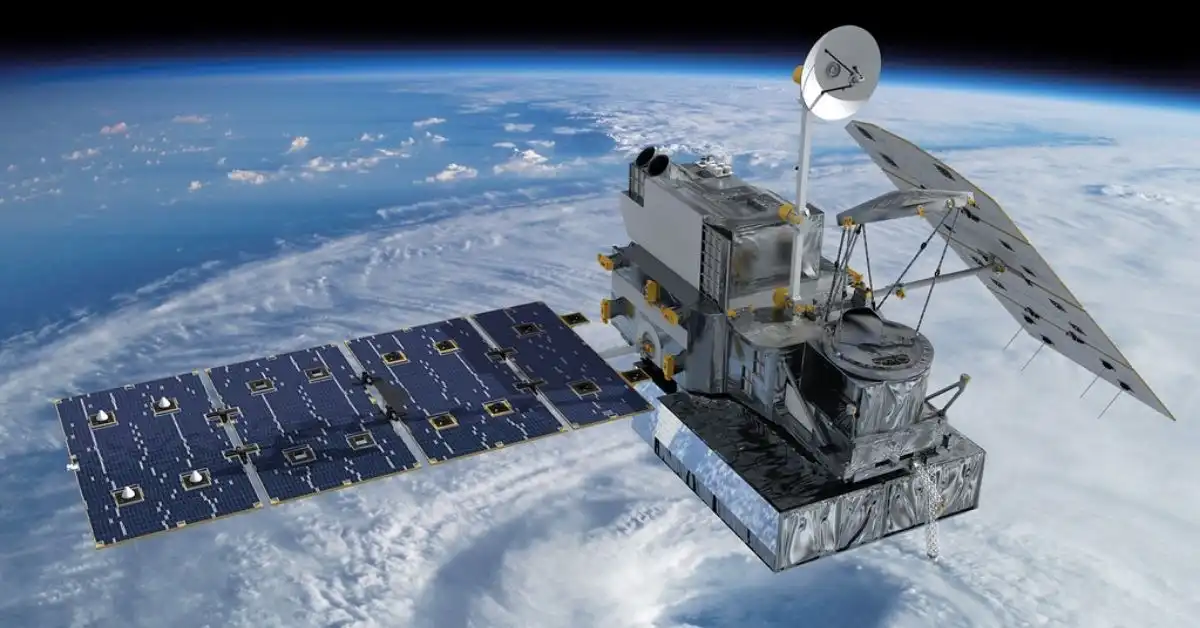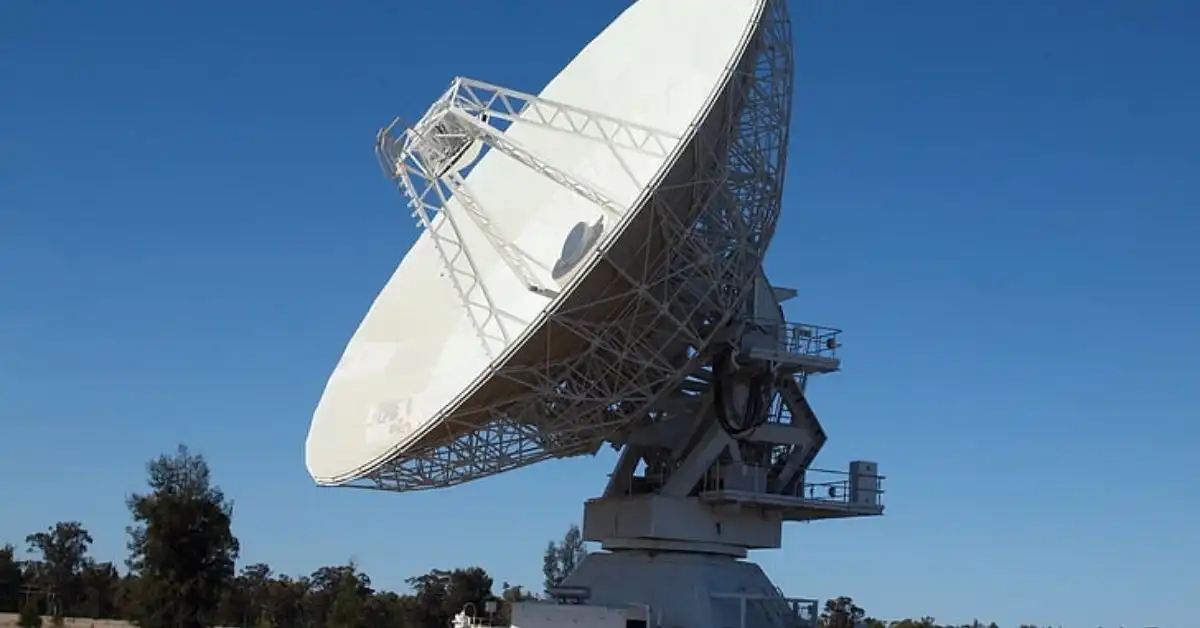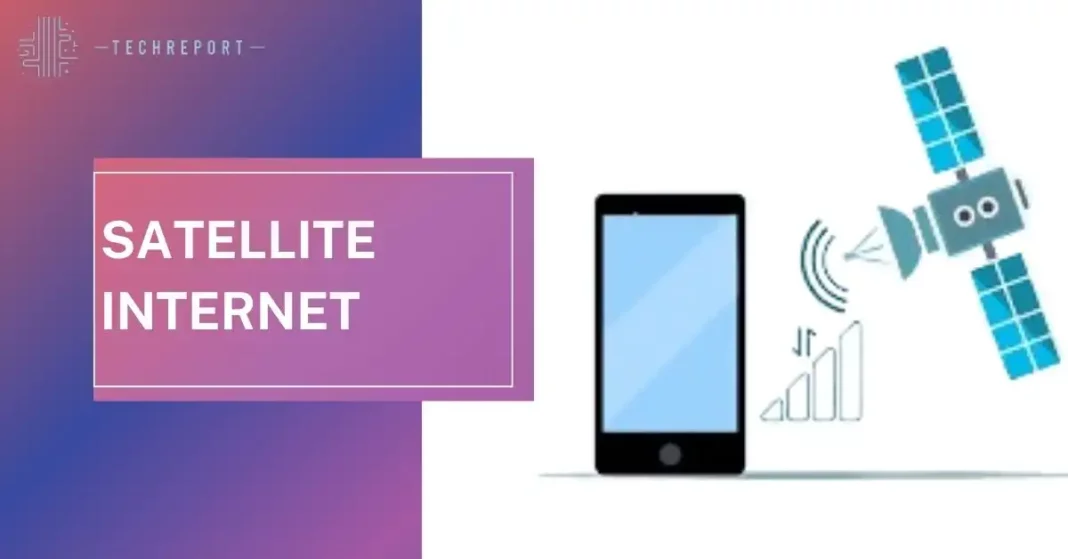Satellite Internet Guide: Everything You Need to Know

Satellite internet, a connectivity lifeline for remote areas, employs orbiting satellites to transmit data signals. Unlike traditional cable or fiber optic options relying on ground infrastructure, satellite internet reaches underserved regions where alternatives are scarce.
In simple terms, your computer sends requests to a satellite dish installed at your location. This dish transmits signals to a satellite in geostationary orbit, situated about 22,236 miles above Earth. From there, the satellite relays signals to a ground station connected to the internet backbone. Subsequently, data travels back to your computer through the same satellite.
Understanding satellite internet is crucial for those in remote locations or with limited connectivity options. Now, let’s delve into the advantages and disadvantages of this unique internet solution.
Also Read: CES 2024 Gadgets
Advantages and Disadvantages

Advantages
Access to Remote Areas:
Satellite internet stands out for its ability to provide internet access to areas where traditional options are unavailable. This includes rural and underserved locations, offering a vital connection for those residing in remote areas.
Ease of Setup:
One of the key advantages is the relatively straightforward setup. Unlike the complex infrastructure required for cable or fiber optic internet, satellite internet often only requires the installation of a satellite dish, making it accessible for users with minimal technical expertise.
Mobile Connectivity Options:
Satellite internet is not limited to fixed locations. Portable satellite options cater to individuals on the move, whether in recreational vehicles or during remote work trips. The flexibility of mobile connectivity adds to the appeal of satellite internet.
Disadvantages
Higher Latency:
While satellite internet has made significant strides, it still grapples with higher latency compared to cable or fiber optic alternatives. The signal’s lengthy travel distance can result in noticeable delays, impacting real-time activities like online gaming or video conferencing.
Lower Speeds:
Satellite internet speeds, while improving, generally lag behind those offered by cable or fiber optic providers. Users may experience slower download and upload speeds, affecting the overall internet experience.
Higher Cost:
Affordability remains a challenge for satellite internet users. The expenses associated with launching and maintaining satellites contribute to higher service costs compared to traditional internet options.
Weather Dependence:
Satellite signals can be vulnerable to adverse weather conditions, such as heavy rain or storms. This weather dependence introduces an element of unpredictability, impacting the reliability of satellite internet during inclement weather.
Understanding these advantages and disadvantages is crucial for individuals considering satellite internet, as it helps in making informed decisions based on their specific needs and circumstances. Next, we’ll explore leading satellite internet providers in the market.
Also Read: VR Headsets 2024 Guide
Leading Satellite Internet Providers

When considering satellite internet providers, several names stand out, each with its unique offerings and coverage. It’s essential to explore these options before making an informed decision.
Starlink:
Starlink has garnered attention for its impressive speeds, ranging from 25-220 Mbps for downloads, and relatively low latency of approximately 20-40 ms. Utilizing a constellation of low-orbit satellites, Starlink aims to provide robust coverage. However, it’s crucial to note that availability and costs can vary based on your specific location.
Viasat:
Viasat offers a broader coverage area compared to some competitors. With reliable speeds of up to 100 Mbps, it provides a viable option for users in various locations. However, users should be mindful of data caps, as plans often come with limitations. Costs can range from $50 to $150 per month.
HughesNet:
HughesNet stands out for its affordability, with plans starting at $49 per month. While more budget-friendly, it does come with some trade-offs. Speeds range from 25-200 Mbps, and latency tends to be higher, ranging from 60-150 ms. It’s a suitable choice for those prioritizing cost-effectiveness.
RDOF (Rural Digital Opportunity Fund):
The Rural Digital Opportunity Fund aims to bridge the digital divide in underserved rural areas. While not a traditional provider like Starlink, Viasat, or HughesNet, RDOF funds projects to enhance broadband access in rural regions, potentially impacting satellite internet availability.
Exploring the strengths and considerations of these leading providers is crucial for individuals seeking reliable satellite internet. In the next section, we’ll address the specific needs of those residing in rural areas and the best satellite internet options available for them.
Considerations for Rural Areas
Living in rural areas often entails limited internet options, making satellite internet a valuable consideration. Let’s delve into the specific aspects individuals in rural locations need to consider when opting for satellite internet.
Best Options for Rural Areas:
When it comes to rural connectivity, satellite internet emerges as one of the best options. Its ability to reach remote locations where traditional options fall short makes it a lifeline for those in rural areas. Assessing providers like Starlink, Viasat, and HughesNet becomes crucial to determine the most suitable option based on your specific rural location.
Remote Location Access:
While most satellite internet providers cover remote areas, it’s essential to verify each provider’s coverage map to ensure they service your specific location. Access can vary, and understanding the extent of coverage helps in making an informed decision.
Data Needs for Rural Satellite Internet:
Understanding your data needs is crucial, especially in rural settings where lower data caps are common. Consider your usage patterns:
- Basic browsing and emailing: 10-20 GB/month
- Streaming music and HD video: 30-50 GB/month
- 4K streaming and online gaming: 100-200 GB/month
- Monitoring and choosing a plan that aligns with your data requirements ensure a seamless satellite internet experience in rural areas.
Navigating these considerations becomes pivotal for rural residents seeking reliable and accessible internet options. In the following section, we’ll explore the impact of satellite internet on streaming and gaming activities.
Satellite Internet for Streaming and Gaming

Suitability for Streaming
Satellite internet, while versatile, presents certain considerations for streaming activities. The higher latency inherent in satellite connections can impact streaming experiences, especially for high-definition or 4K content. Users may encounter buffering or interruptions, making it essential to manage expectations and, if needed, explore alternative internet options for seamless streaming.
Impact on Online Gaming
For online gaming enthusiasts, the higher latency associated with satellite internet introduces challenges. Latency, often exceeding 50 ms, can result in noticeable lag and potential disconnects during gameplay. While some games may be playable, competitive gaming or real-time, latency-sensitive applications may lead to frustrating experiences.
Understanding these nuances is crucial for individuals relying on satellite internet for entertainment purposes. In the upcoming sections, we’ll explore portable satellite internet options for those on the go and provide troubleshooting tips for common satellite internet issues.
Portable Satellite Internet Options
Existence of Portable Options
Satellite internet is not confined to fixed locations. Portable options cater to individuals who require connectivity on the move, whether it’s for recreational purposes, work-related travel, or maritime activities. The existence of portable satellite internet solutions opens up possibilities for users who need reliable connectivity beyond traditional settings.
Starlink RV
Starlink offers a portable solution known as Starlink RV. This option provides decent speeds and reliable coverage, making it a popular choice for individuals on the move.
Globalstar Sat-Fi2
Globalstar Sat-Fi2 is another portable satellite internet option. While catering to various needs, it’s essential for users to assess their specific requirements and budget constraints before selecting the most suitable portable solution.
DISH Wally
DISH Wally is a portable satellite internet choice that users can consider. Evaluating factors like speeds, coverage, and overall performance helps in making an informed decision based on individual preferences.
Understanding the available portable satellite options ensures users can stay connected even in unconventional settings. In the subsequent sections, we’ll delve into data needs for travel, considerations for business use, and troubleshooting common satellite internet problems.
Also Read: Top 10 Smartphones 2023
Troubleshooting Slow Speeds
Restarting Equipment
Slow satellite internet speeds can often be resolved with a simple restart. Power off your computer, modem, and router for at least 30 seconds before turning them back on. This basic step can effectively address temporary glitches and restore optimal performance.
Checking Data Usage
Monitoring your data usage is crucial, especially with satellite internet plans that may have data caps. Exceeding your limit can result in speed throttling. Keep track of your data usage through your provider’s portal or app, and consider upgrading your plan if needed to avoid speed limitations.
Adjusting Equipment Placement
Ensure that your satellite dish has an unobstructed view of the south sky, free from obstacles like trees or buildings. Additionally, check for any snow buildup on the dish, as this can interfere with the signal. Properly adjusting and maintaining equipment placement contributes to consistent and reliable satellite signal reception.
Weather Disruptions
Adverse weather conditions, such as heavy rain or storms, can impact satellite signals. If you experience slow speeds during inclement weather, it’s advisable to wait for conditions to clear. Weather disruptions are temporary, and speeds should improve once the weather stabilizes.
Wi-Fi Optimization
If you’re using Wi-Fi, optimizing your setup can contribute to better speeds. Consider moving your router to a central location for improved coverage. Upgrading to a mesh Wi-Fi system can further enhance connectivity, particularly in larger homes or areas with dead zones.
Contacting the Provider
If the above troubleshooting steps do not yield the desired results, reaching out to your satellite internet provider is essential. They can assist in checking for network issues, diagnosing potential equipment problems, and offering further troubleshooting solutions tailored to your specific situation.
Patience and persistence are key when troubleshooting slow speeds. By following these steps and collaborating with your provider, you can work towards resolving issues and ensuring a smoother satellite internet experience. In the subsequent sections, we’ll address common satellite internet problems and their solutions, ensuring a comprehensive guide for users.
Common Satellite Internet Problems and Solutions
Dropping Connection
Problem: Experiencing frequent drops in internet connection can be frustrating.
Solution: Check your satellite dish alignment to ensure it’s properly positioned. Restarting your equipment, including the modem and router, can often resolve connection issues. If problems persist, contacting your provider for further assistance is advisable.
High Latency
Problem: High latency, inherent in satellite internet, may occasionally be unusually high, impacting user experience.
Solution: Check your data usage, as exceeding data limits can lead to increased latency. If the issue persists, contacting your provider to assess potential network issues is recommended. Managing expectations for real-time applications is crucial due to the nature of satellite internet.
Buffering While Streaming
Problem: Buffering interruptions during streaming can detract from the viewing experience.
Solution: Given the high latency of satellite internet, consider adjusting streaming quality settings to lower resolutions for smoother playback. If buffering issues persist, explore alternative internet options for improved streaming experiences, especially for high-definition or 4K content.
Understanding these common problems and their solutions equips users with the knowledge to address issues promptly. In the concluding sections, we’ll explore considerations for business use, providing insights into business satellite internet plans and their reliability.
In Crux
In conclusion, exploring the realm of satellite internet unveils a unique connectivity solution, especially for those in remote or underserved areas.
In your satellite internet journey, patience and persistence are paramount, especially when addressing challenges. By understanding the nuances and leveraging the troubleshooting tips provided, users can optimize their satellite internet experience.
For more information or specific queries, don’t hesitate to explore further or reach out to your satellite internet provider. Happy connecting!
How much did you like our detailed Satellite Internet: Providers, Speeds, and Costs? Also, please share these Blogs with your friends on social media.
Related Blogs
- Is iPhone 14 Worth the Hype
- Unblock Banned Apps
- Best Cheap VPN Services
- Antenna vs Cable TV
- TiVo or DVR
























